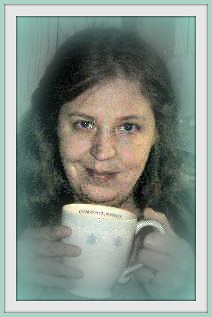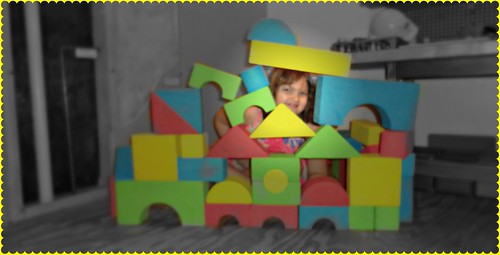It’s Monday again – time for Coffee and Conversation.
When I was six, my familywas driving on a highway late at night. Streaks of headlights and taillights painted the dark. For the first time, I realized that each car held people living lives as important to them as mine was to me.
I wanted to know what those lives were, and to share my own…
Here, each Monday, I strive to reach that understanding by offering ideas and tidbits from my life. Settle in for a while, and maybe share something of yours, too…
I believe there are many things we can learn from those around us – and that this includes the children in our lives. Kids, in the act of their living and growing, offer many lessons to those who are paying attention.
Annalise has always had a knack for balance – with her body, with the way she creates, and in the way she lives her life.
I, on the other hand, have a tendency toward clumsiness, of being a bit off-centered, of leaning too far to one side of the other, and losing my balance in the process.
In general, January seems to be an out-of-kilter time for many adults as we set resolutions, evaluate our lives and find ourselves wanting, and dive headlong into the project of making ourselves better, stronger, thinner – or any number of other “-ers”.
I gave up resolutions a couple of years ago, partly because I watched the way my children approach their own challenges. Maybe because they’ve never been in school, they don’t tend to look to the grownups in their lives to tell them what goals to set, or how to approach them. They decide what they want to improve, and generally already have some form of plan before they even mention it to me, if they do.
They approach their goals playfully, with open minds and a willingness to make some mistakes and fumbles along the way. That frees them up to be more daring than I tend to be; because, for them, failures are a way of learning what not to do, rather than the waste of time and energy they’re often viewed as, in the adult world.
Last week, I took Annalise to the Childrens’ Museum at Saratoga, a local attraction she’s been wanting to revisit for a while. It’s set in a big old Victorian house, with the lower level open and largely devoted to the world of nature and travel, and the upper level filled with rooms outfitted as a diner, a bank, a schoolroom, a fire station, a grocery, a post office, and a construction zone.
A given of our lives is that when there is a chance to build at any event, Annalise will eventually be there, constructing her fantasies.
And, when she’s building, there will be risktaking – and there will be her intuitive sense of balance, guiding her sensibilities and choices, too.
It took her about 3 minutes to construct the fort above, using foam blocks. It’s worth noting that she didn’t falter, and no blocks fell until two younger kids came in and she let them help her destroy it. I watched, and took some pictures, my breath catching each time she chose to balance a block on its points – which, to me, looks haphazard and completely unstable.
And yet, the fort never fell – her instincts were more reliable than mine. She began with a good strong foundation, then took a risk or two on the second level, but with support on each side. There’s a symmetry even when her risks get more frequent and expansive in the top two levels.
So, what can we learn from the way my daughter builds a soundly balanced and fanciful structure?
- Reasoned risks can be supported by a sound foundation. Friends, habits, learning, practice: these can be the strong base upon which we balance, as we prepare to stretch and take chances.
- Risktaking is best if approached with an understanding of the goal. Annalise knew, from the start, that she wanted to build a fort, and an image of what that fort might look like. She took her chances within the parameters of what she wanted to create. We can do that in our own lives, if we know what it is that we are trying to build or create.
- Don’t take every risk that comes along. Annalise measured the risks she took along the way, starting with only one or two, and building as she had a better sense of how her structure was evolving toward the goal in her mind. Risks are less risky if we pace ourselves and give a little space and time to see how things turn out before taking more chances.
- Take risks with confidence and joy. Annalise knew she could build, and she understands balance. She tends to narrate her play, and, while building, she often referred to the her fort and choices as “structurally sound”. It made her happy to build what she envisioned; she didn’t come to it out of obligation, but out of a desire to create something that hadn’t existed before. We can take a page from her if we make choices from a place of confidence and knowledge, and if we carry a delight in the act of creating.
How do you approach balance and risk? Do you like structured balance, or our you willing to take chances? Have you learned something, or found inspiration in, the play of a child? I’ll offer up a treat and some hot beverages, and let’s converse! =D


